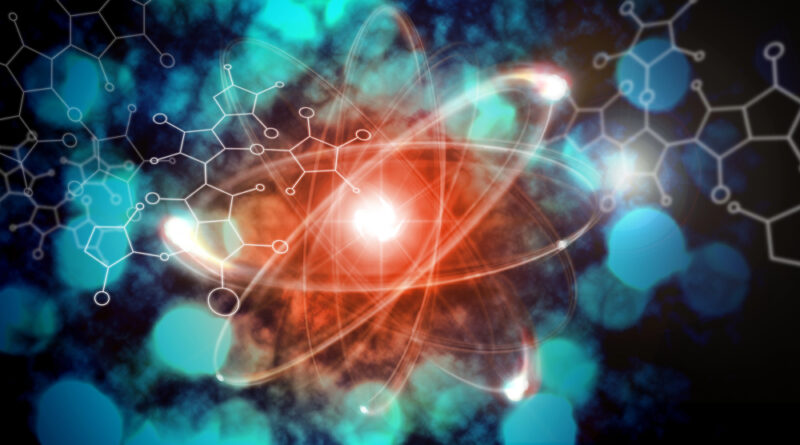In Two Places at Once – How Quantum Superposition Challenges Our Notion of Reality
A Century-Old Puzzle That Still Stings the Intellect
Ask any physics under-graduate what most unsettles them about their first quantum-mechanics class and you will likely hear the same answer: superposition. The concept insists that a single particle can inhabit many mutually exclusive states simultaneously until we decide to look. That affront to common sense first surfaced roughly 100 years ago, yet scientists remain divided over what it truly represents and, by extension, over whether an objective reality exists independently of observation.
Schrödinger’s Roadmap: Probabilities, Not Stories
At the heart of the issue lies the Schrödinger equation, the mathematical workhorse of quantum theory. Rather than narrating a particle’s journey in space and time, the equation produces a wave function, a probability landscape that catalogues every possible state the particle may adopt when measured. In this formalism, the “state” prior to measurement is not a definite position or momentum but a weighted blend of alternatives.
Experiments bear out the predictive power of this framework. Fire a single photon toward a barrier pierced by two slits and, so long as no detector watches the slits, the resulting pattern on a distant screen displays interference, evidence that the photon behaved like a wave, exploring both pathways simultaneously. Introduce a detector, however, and the pattern collapses to two discrete impact regions, each corresponding to one slit. The mathematics nails the statistics of the outcome every time, yet remains eerily silent about what transpires between launch and detection.
Two Philosophies, One Equation
Physicists have adopted two broad stances on how to interpret the wave function’s silence:
-
Information-Centred (QBist) View
Proponents of quantum Bayesianism, often shortened to QBism, treat the wave function as an expression of knowledge, not of reality. In this picture, superposition simply encodes an observer’s incomplete information about a particle’s future measurement result. Measurement updates that information, nothing physical “collapses” because nothing concrete existed prior to the act of observation. To adherents, allowing mathematical symbols to dictate ontology borders on metaphysical overreach. -
Ontological (Wave-Function-Realist) View
A rival camp contends that the wave function is not just convenient bookkeeping; it is itself the fabric of microscopic reality. Under that banner, a particle in superposition literally occupies multiple positions or energies at once, smeared out through space until a measurement pins down one possibility. Philosophers favouring this stance often embrace the idea of a branching multiverse: each outcome of a quantum event plays out in an ever-diverging cosmos, so no option truly vanishes. For everyday experience to remain single-valued, our consciousness must track only one branch.
Between these poles sits a spectrum of hybrid theories, pilot-wave mechanics, objective-collapse models, relational views, but all must wrestle with the same stubborn data: the perfect match between Schrödinger’s equation and experimental statistics, paired with a complete absence of insight into the “reality” the equation might represent.
Superposition Grows Up
While debate rages in lecture halls, experimentalists have pushed superposition from single photons to ever-larger substrates. Recent demonstrations have coaxed complex organic molecules, and even microscopic crystals weighing tens of micrograms, into wave-like states, producing interference fringes that would make a classical physicist blanch. Each new record widens the gap between quantum weirdness and the macroscopic world we navigate. If superposition can encompass billions of atoms moving as one, where precisely does the crossover to everyday definiteness occur? Thus far, nature refuses to supply a clear dividing line.
Reality on Trial
The larger the objects placed in superposition, the louder the metaphysical questions become. If a dust mote can be in two locations at once, does its “both-places” existence carry the same ontological weight as, say, the chair you are sitting on? Or do we merely lack enough information to specify which place is actual?
Advocates of the information-centred view answer that the distinction is meaningless; reality is what we learn through measurement, and probabilities are the only sensible ontic statements we can make. Their opponents counter that treating probabilities as mere knowledge gaps dodges the riddle rather than solving it. For them, accepting that nature might be fundamentally non-classical, even if that means entertaining an ever-splitting multiverse, is the more honest response.
Why the Debate Matters
Beyond intellectual curiosity, the stakes include the conceptual foundations of quantum computing, encryption, and any future technology that exploits superposition. Engineers routinely design hardware that depends on delicate quantum states; knowing whether those states reflect physical dualities or informational abstractions could influence error-correction strategies, decoherence modelling, and metrological standards.
Moreover, the broader public’s appetite for quantum narratives has social consequences. Misunderstandings fuel pseudoscientific claims, while overstated certainties stifle healthy debate. Clarifying what physicists actually know and, perhaps more importantly, what they do not know helps ground policy decisions around funding, education, and emerging quantum industries.
A Paradox with Staying Power
In the century since Erwin Schrödinger penned his equation, superposition has evolved from a mathematical curiosity to a laboratory staple and philosophical minefield. Whether one views the wave function as a catalogue of possibilities or as reality spread thin, the phenomenon forces a reckoning with the limits of human intuition.
As experimentalists continue to suspend ever-larger objects in limbo and theoreticians refine rival interpretations, one conclusion seems unavoidable: the quantum world does not yield its secrets to classical common sense. For now, the question of what is “truly real” remains suspended, superposed, one might say, between competing visions of the universe.
Photo Credit: DepositPhotos.com

